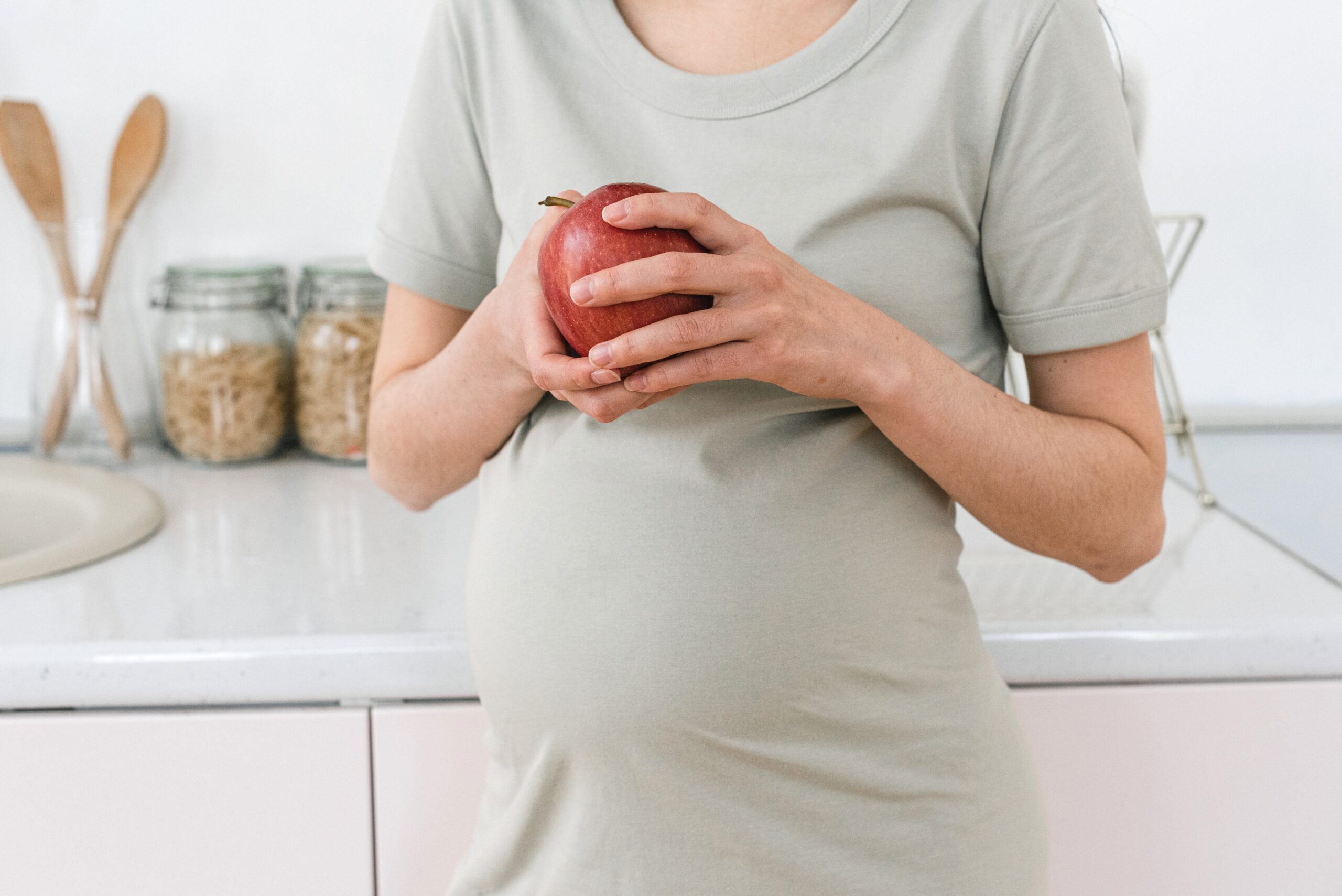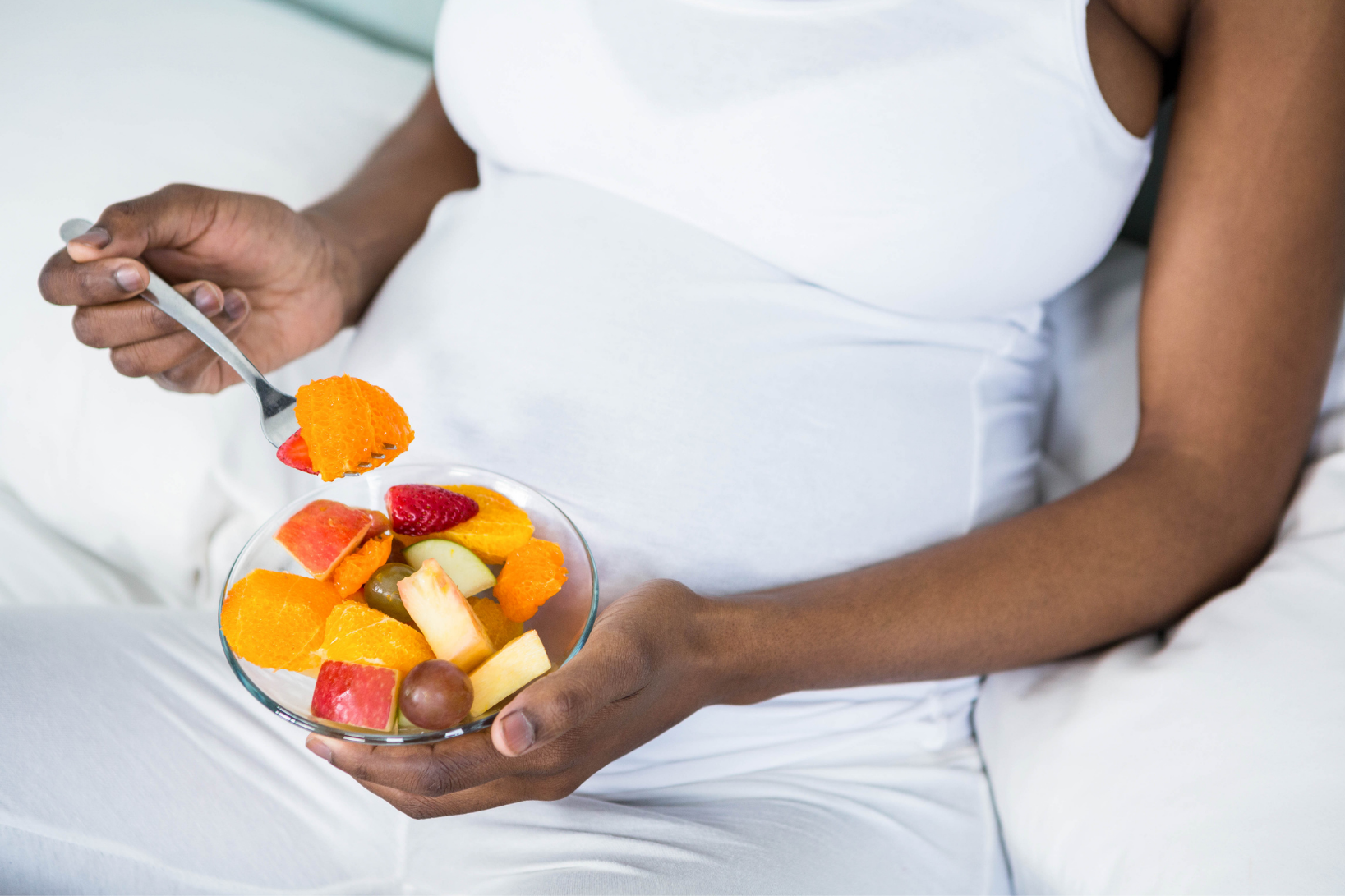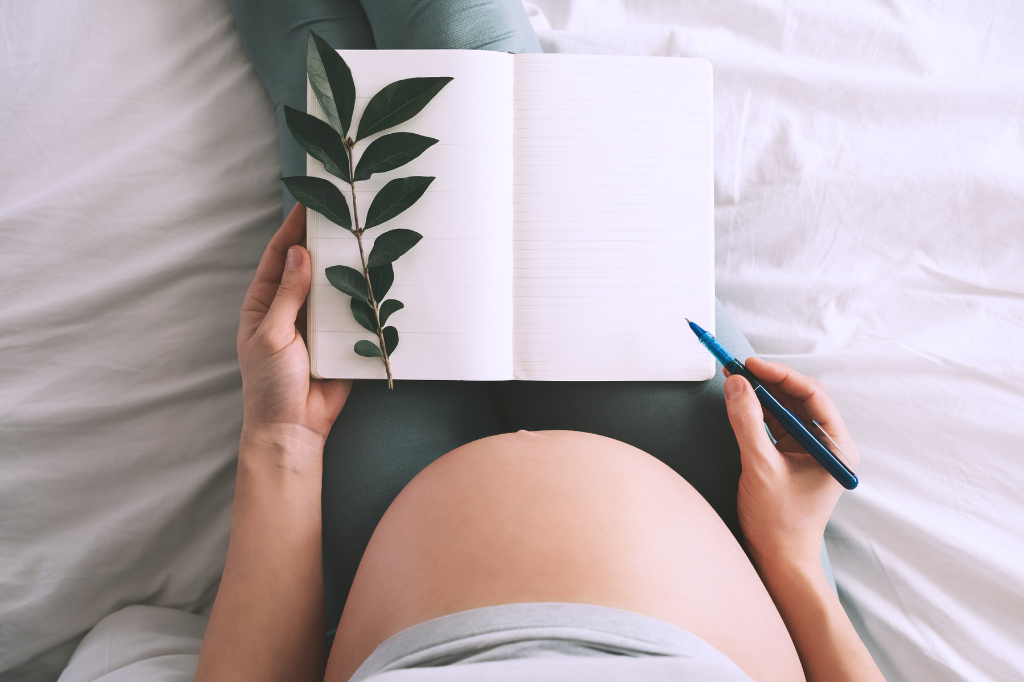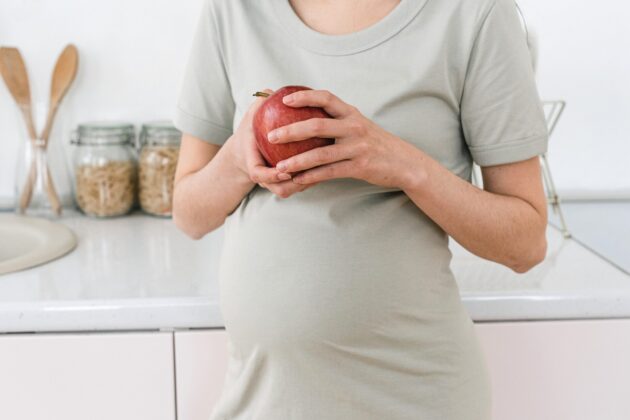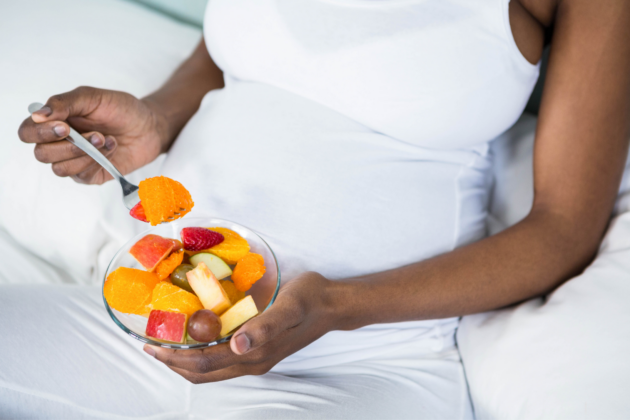Cholestasis of Pregnancy: Causes, Symptoms, & Treatment
Pregnancy is often an uncomfortable time, even when you’re excited about the new arrival to your home.
One of the most common, nagging physical complaints during pregnancy is chronic itching—a term called “pruritis in pregnancy.” About 20% percent of women have chronic pregnancy-related itching for many reasons.
In most cases, the itching is harmless, however, in some cases, the itching represents a more serious condition, called cholestasis of pregnancy. It’s the most common liver-related disorder, affecting about 1% to 4% of pregnant women.
Cholestasis means that the bile acid flow from the liver to your gut is blocked in some way. During pregnancy, bile acids can become blocked within the liver. The medical term for this is Intrahepatic Cholestasis of Pregnancy (ICP).
Cholestasis of pregnancy has many interrelated causes that lead to a buildup of bile acids in the bloodstream. Bile acids are produced in the liver to help you digest fats. Among some pregnant women after about 30 weeks gestation, the bile acids fail to enter and pass through the bile ducts. Instead, they back up from the liver and enter the bloodstream.
The most common symptom is itching, particularly of the palms of your hands and soles of your feet. Some women will temporarily develop yellowing of the skin—a condition called jaundice. While it is not harmful to you, the risk to your baby is greater. Cholestasis of pregnancy can cause preterm birth, fetal distress, or stillbirth.
The good news is that cholestasis of pregnancy is treatable. If you talk to your healthcare provider when you first notice the symptoms, treatment may help prevent complications. This guide goes over what to look for and how doctors manage this challenging pregnancy condition.
What is cholestasis of pregnancy?
Bile acids normally flow easily from the liver through the bile ducts and into the gut, where they help absorb fats and certain vitamins.
About 1% to 4% of pregnant women develop a slowdown in the flow of bile, leading to an excess of bile acids in the bloodstream. The problem almost always happens after 30 weeks gestation.
The itching occurs because the bile acids irritate the skin. The itching feels worse at night and often interferes with being able to sleep comfortably. It’s possible to become irritable, anxious, or depressed because of these distressing symptoms.
In addition, without enough bile to help your digestion, you may have fatty stools and difficulty absorbing vitamins that need bile to enter your bloodstream. One of these is Vitamin K, which you and your baby need for blood clotting. Bleeding complications can harm your baby without this necessary vitamin.
Fortunately, cholestasis of pregnancy can be managed and disappears after your pregnancy is over. Should you get pregnant again, however, your chances of developing cholestasis of pregnancy again are 40% to 60%.
What causes cholestasis of pregnancy?
Doctors don’t fully understand the exact cause of this disorder. There seems to be a mix of factors that lead to its development:
- Genetics – Women with a minor mutation in a gene called MDR3 have a higher risk for cholestasis of pregnancy. It doesn’t explain everything, however, as only 16% of women with the disorder have this mutation. Another gene, called MRP2, contributes to the disease among South American women.
- Environment – There appears to be some link between pesticide exposure, diets high in rapeseed oil, and dietary deficiencies in selenium and the development of cholestasis of pregnancy.
- Hormones – The female hormones—estrogen and progesterone—begin to peak in the third trimester of pregnancy. This coincides with the time of onset of cholestasis of pregnancy. When the hormone levels fall after delivery, the problem resolves. These hormones are metabolized in the liver, but how they contribute to cholestasis is unknown.
In many cases, genetics seems to play the greatest role in who gets severe cholestasis of pregnancy. Having the MDR3 gene mutation, for example, means you are more likely to have high levels of bile acids and a greater potential for pregnancy complications.
What are the symptoms of cholestasis of pregnancy?
In most cases, the symptoms of cholestasis of pregnancy are mild and may include:
- Itching – Expect to see itching of the palms and soles first. Generalized itching can also develop over time.
- Jaundice (yellow skin) – About 10% to 15% of women with cholestasis will have mildly yellow skin that resolves after delivery.
- Abdominal pain, nausea, and fatty stools – This is less common. Fatty stools are pale, greasy, and generally looser than normal.
- Bleeding – If you lack the ability to absorb Vitamin K, you can have bruising, bleeding gums, or nosebleeds.
How is cholestasis of pregnancy diagnosed?
If you have symptoms your doctor suspects might represent cholestasis, testing can be done to confirm the diagnosis. There are several tests to consider:
- Total bile acids – This is a test to see how high the bile acid level is in your bloodstream. Levels above 10 micromoles per liter are considered diagnostic of cholestasis of pregnancy. Doctors keep track of this value because levels higher than 40 micromoles per liter are linked to a higher incidence of complications.
- Liver function tests – The total bile acid test is the best diagnostic marker of this disorder; however, your doctor will assess the liver function through blood tests that measure your protein levels and ability to clot blood.
- Pregnancy-related tests – The doctor does not need testing of the fetus to know if you have the disease but because of the potential for pregnancy complications, you may have ultrasounds, a biophysical profile, or other tests to make sure the baby is safe to remain in the womb.
What is the treatment for cholestasis of pregnancy?
The best-known treatment for cholestasis of pregnancy is called ursodeoxycholic acid. The drug has very specific effects to help this disorder. When taken orally at 100 milligrams three times daily, it stimulates the transfer of bile acids out of the fetus’ circulation and back into the mother’s.
Ursodeoxycholic acid will not reduce your symptoms but because it prevents the buildup of bile acids in the fetus’ intrauterine environment, it helps protect your baby before birth. In the meantime, self-care measures will help, such as:
- Drink plenty of fluids.
- Eat fresh, whole foods and fewer processed foods. Learn more about an ideal cholestasis of pregnancy diet here.
- Wear loose clothing and avoid skin irritants.
- Exercise regularly to reduce stress.
- Use essential oils as aromatherapy at bedtime and sleep in a cool bedroom environment.
- Use cool packs or a fan to reduce itching.
- Ask your doctor about taking an antihistamine to help you sleep.
Other treatments include Vitamin K injections to prevent bleeding complications.
Ultimately, the delivery of the baby is necessary if there is fetal distress or risk of complications should the pregnancy be maintained. Inducing labor or cesarean section solves the problem if the baby is mature enough for birth.
After birth, the bile acid elevation resolves—usually between 2 to 3 weeks after delivery.
Will my baby have to be delivered early because of cholestasis of pregnancy?
A term pregnancy is about 37 to 38 weeks gestation. If your bile acid levels remain high, your doctor may elect to induce labor at 37 weeks to help ease your symptoms more quickly and prevent fetal complications seen with cholestasis of pregnancy.
While you may have wished for a completely natural birth, you may need to be monitored more carefully during the labor induction process. This is often routine for inductions but is more important if there is concern that your baby’s placenta is not adequately nourishing the baby—a common problem in cholestasis of pregnancy.
Other complications of cholestasis of pregnancy
Cholestasis of pregnancy will not generally be harmful to you unless you have low Vitamin K levels and bleeding complications, including postpartum hemorrhage. Similar hemorrhages can occur in the fetal brain—often with dire consequences.
Other complications, including those listed below, are avoided by having the baby in a timely fashion:
- Fetal bradycardia (slow heartbeat in the baby) from lack of oxygen
- Low fetal oxygen levels
- Meconium staining of amniotic fluid.
- Preterm birth
- Stillbirth
Because most complications are severe, the doctor will follow the total bile acid levels in the blood. Most complications happen if the level is above 40 millimoles per liter. This is the time when the risks of delivery are less than remaining pregnant.
References
Ghosh, S., & Chaudhuri, S. (2013). Intra-hepatic Cholestasis of Pregnancy: A Comprehensive Review. Indian journal of dermatology, 58(4), 327. https://doi.org/10.4103/0019-5154.113971.
Piechota, J., & Jelski, W. (2020). Intrahepatic Cholestasis in Pregnancy: Review of the Literature. Journal of clinical medicine, 9(5), 1361. https://doi.org/10.3390/jcm9051361.
Self-help for Intrahepatic Cholestasis of Pregnancy (ICP). https://icpcare.org/managing-symptoms/self-help/. Szczęch, J., Wiatrowski, A., Hirnle, L., & Reich, A. (2017). Prevalence and Relevance of Pruritus in Pregnancy. BioMed research international, 2017, 4238139. https://doi.org/10.1155/2017/4238139.
Pregnancy is often an uncomfortable time, even when you’re excited about the new arrival to your home.
One of the most common, nagging physical complaints during pregnancy is chronic itching—a term called “pruritis in pregnancy.” About 20% percent of women have chronic pregnancy-related itching for many reasons.
In most cases, the itching is harmless, however, in some cases, the itching represents a more serious condition, called cholestasis of pregnancy. It’s the most common liver-related disorder, affecting about 1% to 4% of pregnant women.
Cholestasis means that the bile acid flow from the liver to your gut is blocked in some way. During pregnancy, bile acids can become blocked within the liver. The medical term for this is Intrahepatic Cholestasis of Pregnancy (ICP).
Cholestasis of pregnancy has many interrelated causes that lead to a buildup of bile acids in the bloodstream. Bile acids are produced in the liver to help you digest fats. Among some pregnant women after about 30 weeks gestation, the bile acids fail to enter and pass through the bile ducts. Instead, they back up from the liver and enter the bloodstream.
The most common symptom is itching, particularly of the palms of your hands and soles of your feet. Some women will temporarily develop yellowing of the skin—a condition called jaundice. While it is not harmful to you, the risk to your baby is greater. Cholestasis of pregnancy can cause preterm birth, fetal distress, or stillbirth.
The good news is that cholestasis of pregnancy is treatable. If you talk to your healthcare provider when you first notice the symptoms, treatment may help prevent complications. This guide goes over what to look for and how doctors manage this challenging pregnancy condition.
What is cholestasis of pregnancy?
Bile acids normally flow easily from the liver through the bile ducts and into the gut, where they help absorb fats and certain vitamins.
About 1% to 4% of pregnant women develop a slowdown in the flow of bile, leading to an excess of bile acids in the bloodstream. The problem almost always happens after 30 weeks gestation.
The itching occurs because the bile acids irritate the skin. The itching feels worse at night and often interferes with being able to sleep comfortably. It’s possible to become irritable, anxious, or depressed because of these distressing symptoms.
In addition, without enough bile to help your digestion, you may have fatty stools and difficulty absorbing vitamins that need bile to enter your bloodstream. One of these is Vitamin K, which you and your baby need for blood clotting. Bleeding complications can harm your baby without this necessary vitamin.
Fortunately, cholestasis of pregnancy can be managed and disappears after your pregnancy is over. Should you get pregnant again, however, your chances of developing cholestasis of pregnancy again are 40% to 60%.
What causes cholestasis of pregnancy?
Doctors don’t fully understand the exact cause of this disorder. There seems to be a mix of factors that lead to its development:
- Genetics – Women with a minor mutation in a gene called MDR3 have a higher risk for cholestasis of pregnancy. It doesn’t explain everything, however, as only 16% of women with the disorder have this mutation. Another gene, called MRP2, contributes to the disease among South American women.
- Environment – There appears to be some link between pesticide exposure, diets high in rapeseed oil, and dietary deficiencies in selenium and the development of cholestasis of pregnancy.
- Hormones – The female hormones—estrogen and progesterone—begin to peak in the third trimester of pregnancy. This coincides with the time of onset of cholestasis of pregnancy. When the hormone levels fall after delivery, the problem resolves. These hormones are metabolized in the liver, but how they contribute to cholestasis is unknown.
In many cases, genetics seems to play the greatest role in who gets severe cholestasis of pregnancy. Having the MDR3 gene mutation, for example, means you are more likely to have high levels of bile acids and a greater potential for pregnancy complications.
What are the symptoms of cholestasis of pregnancy?
In most cases, the symptoms of cholestasis of pregnancy are mild and may include:
- Itching – Expect to see itching of the palms and soles first. Generalized itching can also develop over time.
- Jaundice (yellow skin) – About 10% to 15% of women with cholestasis will have mildly yellow skin that resolves after delivery.
- Abdominal pain, nausea, and fatty stools – This is less common. Fatty stools are pale, greasy, and generally looser than normal.
- Bleeding – If you lack the ability to absorb Vitamin K, you can have bruising, bleeding gums, or nosebleeds.
How is cholestasis of pregnancy diagnosed?
If you have symptoms your doctor suspects might represent cholestasis, testing can be done to confirm the diagnosis. There are several tests to consider:
- Total bile acids – This is a test to see how high the bile acid level is in your bloodstream. Levels above 10 micromoles per liter are considered diagnostic of cholestasis of pregnancy. Doctors keep track of this value because levels higher than 40 micromoles per liter are linked to a higher incidence of complications.
- Liver function tests – The total bile acid test is the best diagnostic marker of this disorder; however, your doctor will assess the liver function through blood tests that measure your protein levels and ability to clot blood.
- Pregnancy-related tests – The doctor does not need testing of the fetus to know if you have the disease but because of the potential for pregnancy complications, you may have ultrasounds, a biophysical profile, or other tests to make sure the baby is safe to remain in the womb.
What is the treatment for cholestasis of pregnancy?
The best-known treatment for cholestasis of pregnancy is called ursodeoxycholic acid. The drug has very specific effects to help this disorder. When taken orally at 100 milligrams three times daily, it stimulates the transfer of bile acids out of the fetus’ circulation and back into the mother’s.
Ursodeoxycholic acid will not reduce your symptoms but because it prevents the buildup of bile acids in the fetus’ intrauterine environment, it helps protect your baby before birth. In the meantime, self-care measures will help, such as:
- Drink plenty of fluids.
- Eat fresh, whole foods and fewer processed foods. Learn more about an ideal cholestasis of pregnancy diet here.
- Wear loose clothing and avoid skin irritants.
- Exercise regularly to reduce stress.
- Use essential oils as aromatherapy at bedtime and sleep in a cool bedroom environment.
- Use cool packs or a fan to reduce itching.
- Ask your doctor about taking an antihistamine to help you sleep.
Other treatments include Vitamin K injections to prevent bleeding complications.
Ultimately, the delivery of the baby is necessary if there is fetal distress or risk of complications should the pregnancy be maintained. Inducing labor or cesarean section solves the problem if the baby is mature enough for birth.
After birth, the bile acid elevation resolves—usually between 2 to 3 weeks after delivery.
Will my baby have to be delivered early because of cholestasis of pregnancy?
A term pregnancy is about 37 to 38 weeks gestation. If your bile acid levels remain high, your doctor may elect to induce labor at 37 weeks to help ease your symptoms more quickly and prevent fetal complications seen with cholestasis of pregnancy.
While you may have wished for a completely natural birth, you may need to be monitored more carefully during the labor induction process. This is often routine for inductions but is more important if there is concern that your baby’s placenta is not adequately nourishing the baby—a common problem in cholestasis of pregnancy.
Other complications of cholestasis of pregnancy
Cholestasis of pregnancy will not generally be harmful to you unless you have low Vitamin K levels and bleeding complications, including postpartum hemorrhage. Similar hemorrhages can occur in the fetal brain—often with dire consequences.
Other complications, including those listed below, are avoided by having the baby in a timely fashion:
- Fetal bradycardia (slow heartbeat in the baby) from lack of oxygen
- Low fetal oxygen levels
- Meconium staining of amniotic fluid.
- Preterm birth
- Stillbirth
Because most complications are severe, the doctor will follow the total bile acid levels in the blood. Most complications happen if the level is above 40 millimoles per liter. This is the time when the risks of delivery are less than remaining pregnant.
References
Ghosh, S., & Chaudhuri, S. (2013). Intra-hepatic Cholestasis of Pregnancy: A Comprehensive Review. Indian journal of dermatology, 58(4), 327. https://doi.org/10.4103/0019-5154.113971.
Piechota, J., & Jelski, W. (2020). Intrahepatic Cholestasis in Pregnancy: Review of the Literature. Journal of clinical medicine, 9(5), 1361. https://doi.org/10.3390/jcm9051361.
Self-help for Intrahepatic Cholestasis of Pregnancy (ICP). https://icpcare.org/managing-symptoms/self-help/. Szczęch, J., Wiatrowski, A., Hirnle, L., & Reich, A. (2017). Prevalence and Relevance of Pruritus in Pregnancy. BioMed research international, 2017, 4238139. https://doi.org/10.1155/2017/4238139.







